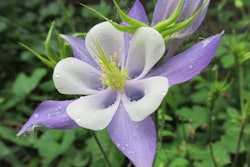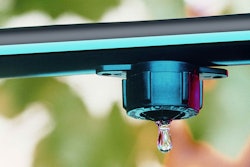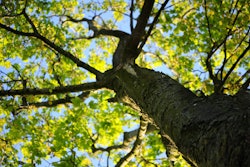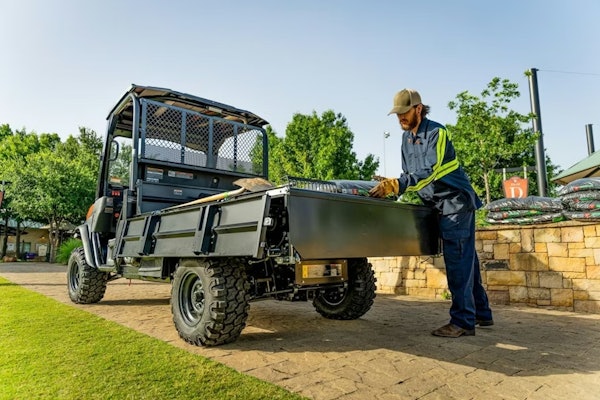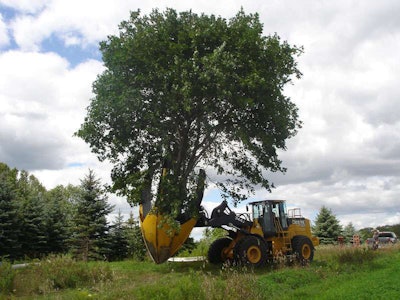 Photo: Wikipedia
Photo: WikipediaMoving a tree takes planning and patience. Planning because not only are there optimal times for transplanting, but also because root balls are heavy and you may need to rent the proper equipment to get them from point A to point B. Patience because even if everything goes well, it will take the root system several years to regenerate, resulting in measurably slow above-ground tree growth.
Even though moving trees is often a necessary part of your job, know that doing so will put the tree in a state of extreme stress. While you won’t be able to eliminate that stress altogether, these tips will help you reduce potential problems and optimize transplant success.
- Analyze the site. If a client wants to move a tree from one area to another, first assess the need for the move and whether the environment is suitable. Consider the amount of sun exposure, space limitations and drainage of the new site vs. the existing site and consult with your client openly, especially if you feel the move will result in the ultimate decline of the tree.
- Weighing in. Know that root balls are heavy. And the size of the root ball you’ll move with the tree is contingent upon the tree’s trunk diameter. Even a tree with only a 3-inch trunk diameter can have a root ball that weighs 700 pounds. To move this kind of weight, you’re probably going to need heavy equipment to help you out.
- Watering hole. The best time to dig and move a tree is when it is in a dormant state. If it’s not possible to wait, be sure to water the tree before the move to help reduce stress on the tree. Also water the area where you’ll be moving the tree. If it’s hot and there is foliage on the tree, use an anti-transpirant.
- Digging it. You will need to measure about 10 inches of root ball for every 1 inch of trunk diameter. So a tree with a 3-inch trunk diameter will measure 30 inches diameter of root ball. And even at that size, you’ll be leaving as much as 95 percent of the existing root system behind. Also make sure to put the trunk at the center of the root ball that you dig. Once you’ve dug the root ball to the specified size, wrap it in burlap and twine so that it remains cohesive during the move.
- Prepare the site. Width and depth are critical when digging the new hole for the tree. Remember that the hole should be three to five times the diameter of the root ball because new root growth will be primarily horizontal, not vertical. And don’t dig too deep. You should dig no deeper than the root ball and, in some instances where there is poor drainage or you anticipate excess settling, dig a hole that is a little shallower than the root ball.
- Plant the tree. Try to situate the tree using the same orientation it had in the former location (if it was facing south, for example, try to position it as such in the new location). Remove the burlap wrapping from the top and sides of the root ball and fill the hole with soil.
Mulching basics
Mulching trees can be one of the best or worst things you can do for them. If done correctly, mulching can improve tree health and vigor and optimize growing conditions. But over-mulching trees can cause significant damage, and even death. It might take years to even recognize your mistake; the symptoms of over-mulching are not seen immediately, but progress over time, sometimes taking more than five years to manifest.
“All things in moderation should be [the] mulching motto,” says Jim Skiera, retired executive director of the International Society of Arboriculture. “As beneficial as mulch is, too much can be harmful in more ways than one.”
The generally recommended mulching depth is 2 to 4 inches, according to the ISA. When applied properly, mulch helps maintain soil moisture, control weeds, improve soil structure and inhibit certain plant diseases. Mulch also protects plants and trees from string trimmer damage and mower blight in addition to giving planting beds a uniform, well cared-for look.
To ensure the health of trees and plants, follow these practical mulching tips:
- For well-drained sites, apply a 2- to 4-inch layer of mulch. If drainage problems exist, use a thinner layer.
- If mulch is already present, check the depth. Do not add mulch if there is already a sufficient layer (2 to 4 inches) in place. Instead, rake the old mulch to break up any matted layers and refresh the appearance.
- Avoid placing mulch against the tree trunks.
- If mulch is already piled against the stems or tree trunks, pull it back several inches so that the base of the trunk and the root crown are exposed.
- Mulch out to the tree’s drip line or beyond if possible.
- Most commonly available mulches work well in most landscapes. Be mindful of the fact that some plants may benefit from the use of slightly acidifying mulch such as pine bark.
- Organic mulches are preferable for their soil-enhancing properties. Be sure it is well aerated and composted to avoid sour-smelling mulch.
- Avoid using uncomposted wood chips that have been piled deeply without exposure to oxygen. Use composted wood chips instead, especially when they contain a blend of leaves, bark and wood.
The root of the problem
If you manage commercial or residential grounds that prominently feature trees near streets and sidewalks, you know that these trees are forced to overcome an especially cruel climate for optimal growth: compaction, poor drainage and often a lack of useable soil volume for root growth. It’s difficult to get them established and it’s a challenge to make them thrive.
However, Cornell University’s Urban Horticulture Institute has a patented system that can help alleviate at least one of the challenges that face trees in urban areas: poor rooting environment. Cornell Structural Soil, or CU-Soil, is a soil mix that meets engineering requirements for a load-bearing soil while meeting tree requirements for root growth. It uses a precise gravel size, soil texture and hydrogel to maximize stability, air space and water-holding capacity. For more information, visit this site.



